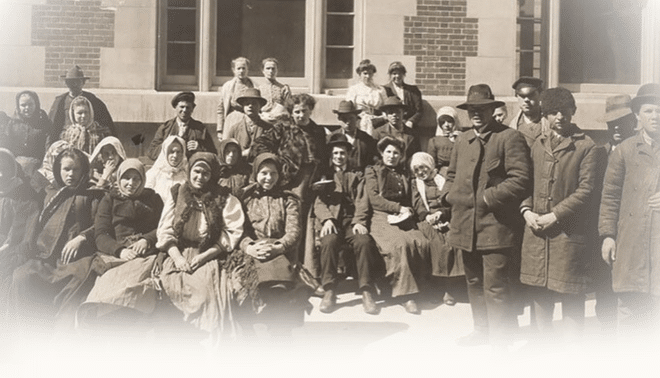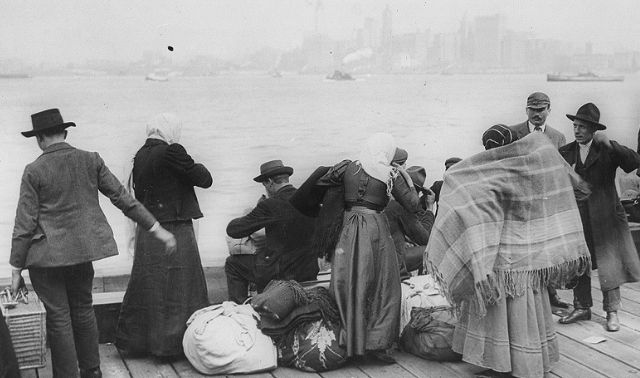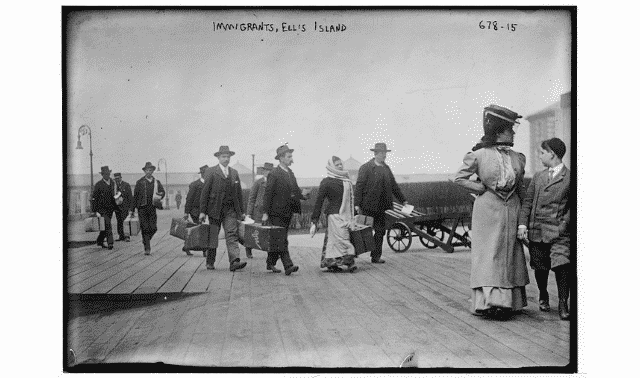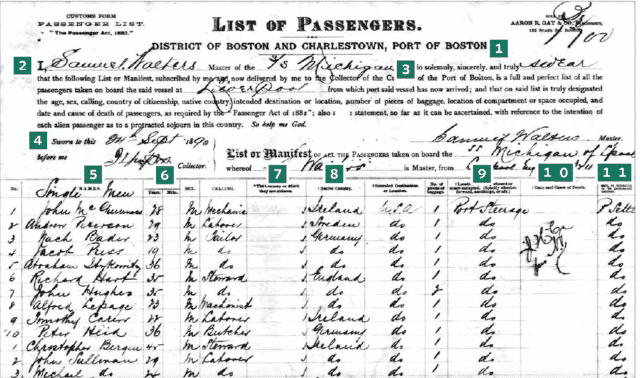
Immigrants arrived in ships at ports all along the US coastline. Beginning in 1820, each ship had to present a passenger manifest to the customs officer in the port of arrival before passengers could disembark. The customs officer prepared a summary transcription each month to send to Washington, DC.
A Brief Overview of Passenger Lists
The earliest passenger lists recorded only a passenger’s name, age, sex, occupation and the country of origin. By the 1840s, lists added the country where the person intended to settle. Additional notes might indicate if a passenger died on board or gave birth. Crewmembers appear on manifests only beginning in the late 1890s.
Some shipping companies and arrival ports devised their own forms. In 1891, the Immigration Bureau was established as a part of the Treasury Department to administer immigration laws. The Bureau standardized the forms and distributed copies to shipping companies.
The government’s informational requirements increased over time. From 1893 to 1903, manifests added information including passenger’s marital status, last residence, previous US visits, a US relative, literacy, person who paid the passage, amount of money in his or her possession, and health. “Race or people” was added in 1903, and personal description in 1906. Especially exciting for modern researchers, in 1907 manifests began to include the name and address of the nearest living relative back home.
Passenger records from 1820 through 1954 are now with the National Archives and Records Administration, where they’ve been microfilmed. (The few extant pre-1820 lists are generally in state archives where the port was located.) Digitized manifests are on subscription site Ancestry.com and the free FamilySearch.org; Ellis Island manifests are accessible free online.
How to Read a Passenger List Step-by-Step
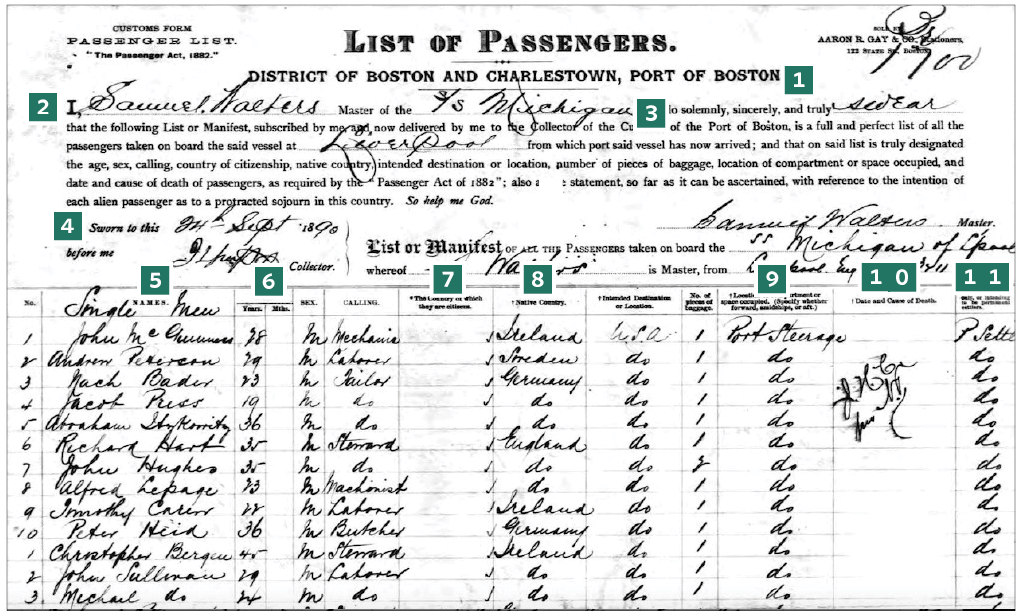
1. Some manifests were preprinted with the name of the port of arrival, but most provided a blank for the port to be written.
2. The ship’s captain or master filled in the departure port (Liverpool) and signed the manifest to attest to its accuracy.
3. Search the ship’s name, the S. S. Michigan, to find images of it, illuminating the experience of these passengers.
4. The date of the captain’s sworn statement—Sept. 24, 1890, on this list—is typically the date your ancestor’s ship arrived in the United States.
5. The list of passengers’ names may have been created as tickets were purchased or after the ship left the departure port. The ship’s purser listed single men first, followed by single women, then families. You also might see names grouped by cabin class (such as first class and steerage).
6. Forms asked for the age in years and months, but months were usually omitted.
7. This form’s “The country of which they are citizens” column wasn’t typical on manifests at the time.
8. This important information points you to the person’s native country. Remember, though, that it may refer to the country of birth or to the home country at the time of immigration. Also note that national borders may have changed since the list was created.
9. Some shipping companies recorded the amount of baggage and the passenger’s cabin class.
10. Deaths might be noted on the line with the passenger’s name, in the margins, or at the end of the manifest.
11. The form indicates whether a passenger was visiting or planned to settle permanently in the United States. Some who intended to stay eventually returned home; others traveled back home to retrieve family.
A version of this article appeared in the September 2015 issue of Family Tree Magazine.

